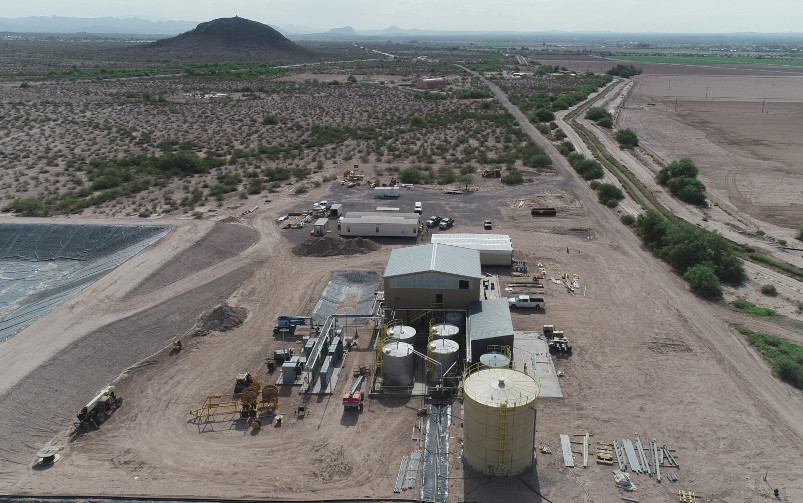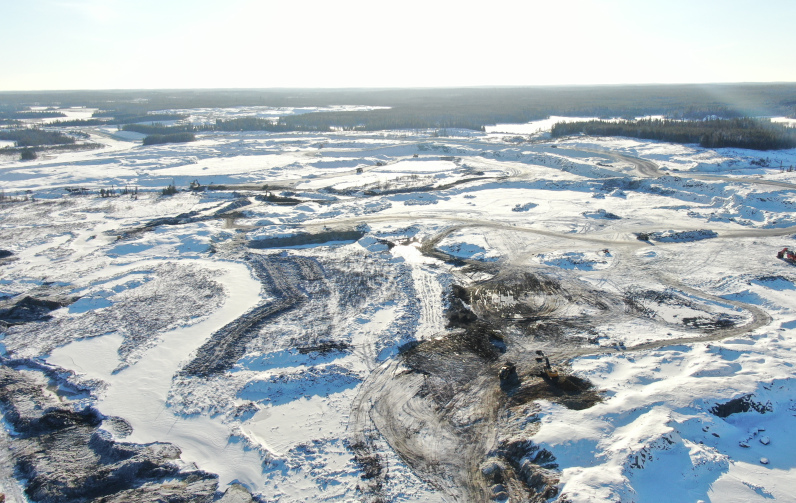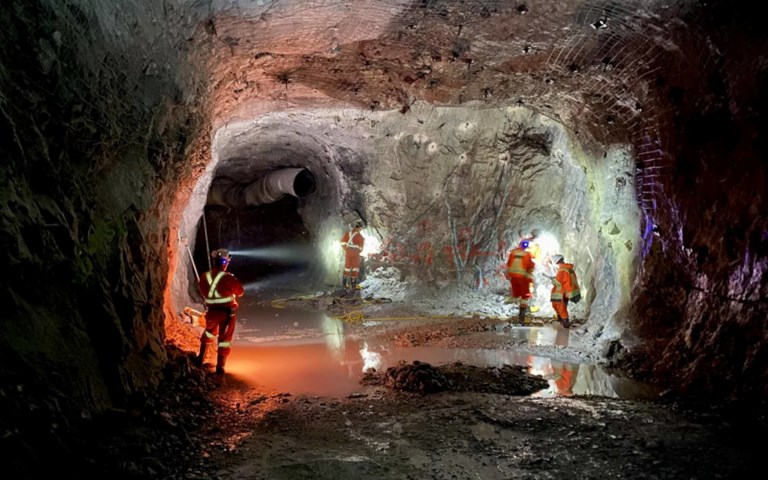Osisko is working to complete an environmental impact assessment study for Windfall in the first quarter of 2023. Courtesy of Osisko Mining.
Welcome back to your weekly mining news recap, where we catch you up on some of the news you may have missed. This week’s headlines include new rules for foreign investment, advice for responsible tailings management and new investment in mining technologies.
Natural Resources Minister Jonathan Wilkinson released the federal government's new critical mineral strategy today. The document notes the importance of streamlining the permitting and environmental assessment processes for critical mineral projects and that the government “is committed to meeting the objective of ‘one project, one assessment.’” Mining Association of Canada CEO Pierre Gratton celebrated the strategy, stating in a press release, “it is arguably the most significant industrial strategy the country has seen in decades.”
Earlier this week, the Liberal government proposed changes be made to the Investment Canada Act to address national security concerns, as reported by CTV News. These proposed changes would require foreign investors to inform the federal government about certain investments in several of the country’s business sectors, including critical minerals. Stricter penalties for investors who do not comply with new changes and the sharing of “case-specific sensitive information with international counterparts” will also be among these new changes.
Brazil-based Vale SA has announced a spinoff of its base metal assets from its iron operations, creating a new company known as Vale Base Metals, as reported by Bloomberg. The separation of the business would see the company acquire the capital needed for roughly US$20 billion in base metal investments. Vale will also unveil a “strategic partner” for the new company in the first half of 2023.
During the early days of the COVID-19 pandemic, assaying labs saw weeks-long delays in receiving mineral results, which eventually led mining companies to source more effective and time-saving ways to assay. New technologies to speed up the assay process include automated X-rays, laser-induced breakdown spectroscopy, and the wet chemistry process known as digestion.
Operators are seeking out new ways to address the management of tailings while also incorporating social engagement into the process. Franciska Lake and Jacky Burke of SRK Consulting outline a framework consisting of four main steps that offer mining companies some guidance in implementing the Global Industry Standard for Tailings Management. These steps include knowledge sharing, training and awareness, upgrading data systems and more.
In late November, Osisko Mining released the results of the feasibility study for its Abitibi-based Windfall gold project. The study, led by BBA, details an operation that would produce roughly 306,000 ounces of gold annually, and has an after-tax net present value of $1.2 billion.
Never miss another recap
Sign up for the latest news from CIM Magazine and the Canadian Institute of Mining, Metallurgy and Petroleum.
Glencore has shut down plans for its Australian US$1.3-billion Valeria coal project, as reported by Mining.com. The project, which would have produced both metallurgical and thermal coal, was set to be one of the biggest mines in the country, has been abandoned due to Glencore’s concerns regarding “global uncertainties and an increase in state royalties.” The Valeria project was expected to produce 20 million tonnes of coal annually over a span of 37 years.
MineSense Technologies raised US$42 million in a fifth round of financing to help commercialize its ore-grade sensing and management tools. The core technology of the Vancouver-based company relies on X-ray fluorescence sensors that can be affixed to a shovel bucket or a conveyor belt and provide real-time information on ore characteristics.
Ring of Fire Metals and Webequie First Nation have signed a memorandum of understanding towards developing the Eagle's Nest deposit in the Ring of Fire, as reported by Northern Ontario Business. The agreement will guide Ring of Fire Metals and the Webequie First Nation community in effectively executing exploration of the project site. The project’s initial mine life would span 11 years, with the possibility of a nine-year expansion, but there is no timeline for its construction as of yet.
The Mosaic Company is temporarily halting production at its Colonsay potash mine, as reported by SaskToday. The decision to pause operations “reflects near-term dynamics and not long-term agricultural market fundamentals. Crop prices remain strong and continue to support healthy grower economics,” explained Mosaic president and CEO Joc O’Rourke. The mine produces 1.3 million tonnes of potash annually.
Glencore announced that a significant copper shortage can soon be expected, which would cause a lag in the shift away from carbon-intensive energy sources, as reported by OilPrice.com. The company believes that the world could see a deficit of 50 million tonnes of copper between 2022 and 2030. With this in mind, Glencore is planning to expand its copper output by taking on a new project, El Pachon, located in Argentina.
That’s all for this week. If you’ve got feedback, you can always reach us at editor@cim.org. If you’ve got something to add, why not join the conversation on our Facebook, Twitter, LinkedIn or Instagram pages?




